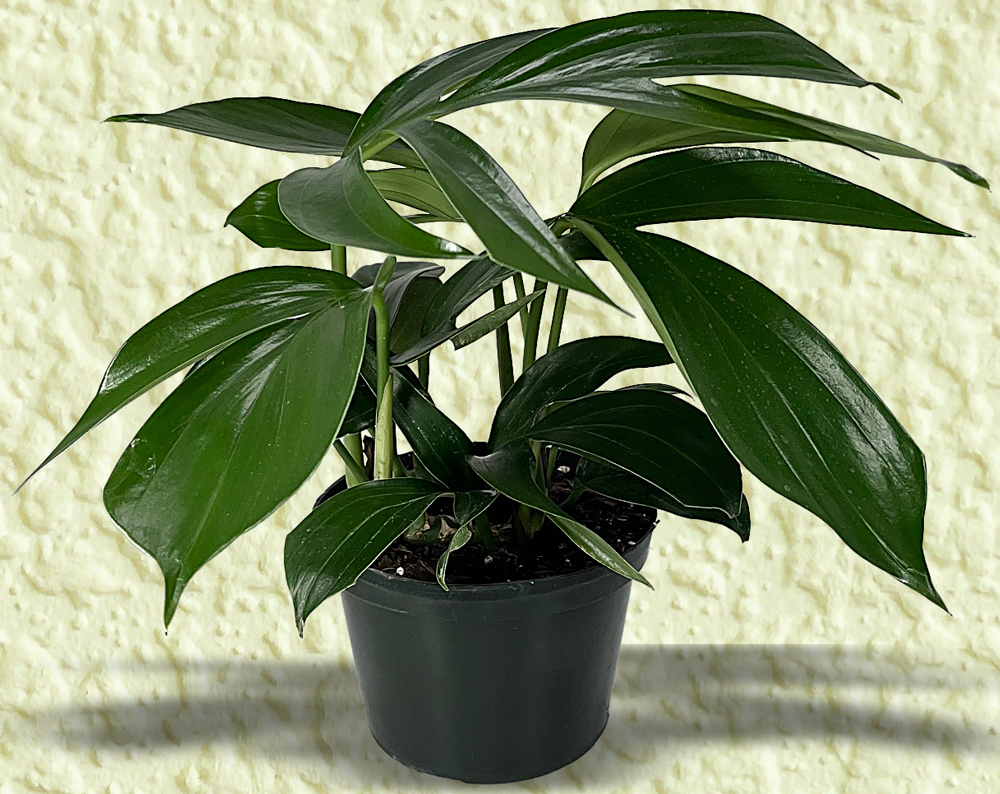![]()
Raphidorphora decursiva
Commonly called the Dragon Tail Plant, Creeping Philodendron, Monstera Decursiva. While called the “Creeping Philodendron”, it is not a monstera or philodendron. The foliage has broad leaves that change shape as it matures. But it does indeed creep! It will slowly climb up whatever support it finds as it unfurls its ever-growing leaves towards the light. Young leaves are bluish-green, but as they grow larger and more mature, they become dark green.
In its native environment, this climbing tropical plant grows up tree trunks in the forest understory and is accustomed to dappled sunlight. When grown indoors, it does best in a location that receives several hours of bright, indirect light.
PLEASE NOTE, these plants are Toxic to Children, Dogs and Cats!
Things You Need To Know
These plants can do well in indirect sunlight, filtered sunlight, and bright sunlight. The best situation provides full morning sun and some protection from the harsh rays of the afternoon sun; If you keep it in bright sunlight, the leaves will be scorched. Indoors, it is best to place the plant in an east-facing or north-facing window. West facing and south-facing windows deliver sunlight that is too harsh.
Dragon Tail also does very well with fluorescent lighting, so it makes a good office or kitchen plant. You can also use grow light for this if you are growing it in an area without natural light.
These tropical plants like a consistently warm temperature ranging from 60° to 80° degrees Fahrenheit. Protect the plant from extremes in temperature.
The flower is green, looks stubby, and has a white and/or yellowish covering making it look like corn, and it usually blooms during the Spring or Summer.
Generally, these tropical plants like to be watered a couple of times a week during the growing season. When it comes time to water, you should water the plant thoroughly so that the plant’s soil is thoroughly soaked through. Then, ensure that all the excess water has drained from the pot via the pot’s drainage holes and allow the soil to dry out slightly before repeating the process. Keep in mind that during the fall and winter when the plant’s growth naturally slows down it will need less water, so you should cut back on the frequency of watering to prevent overwatering.
These epiphytic plants grow best in slightly acidic, rich, very well-draining soil. Strive for a pH level between 5.5 and 6.0.
Kept as a houseplant, you can expect them to top out at 5′ feet or so.
The mature lobed leaves are quite large. On outdoor plants, they may grow to be 20″ inches wide and 40″ inches long.
They may be kept outside year-round in USDA hardiness zones 9B through 11.
This tropical plant is not cold hardy, which is part of the reason it makes an ideal houseplant. It prefers temperatures between 65 to 80 degrees Fahrenheit (18 to 26 degrees Celsius) and is hardy in USDA zones 9 to 11. While the Rhaphidophora decursiva grows just fine in average household humidity levels, it will thrive if it is given some added humidity. Consider placing a small humidifier nearby, or grow your plant in a naturally humid room in your home such as the bathroom, laundry room, or even the kitchen.
Give your plant a monthly feeding with a standard houseplant fertilizer mixed according to packaging directions during the growing season. Do not feed during the autumn and winter months.

